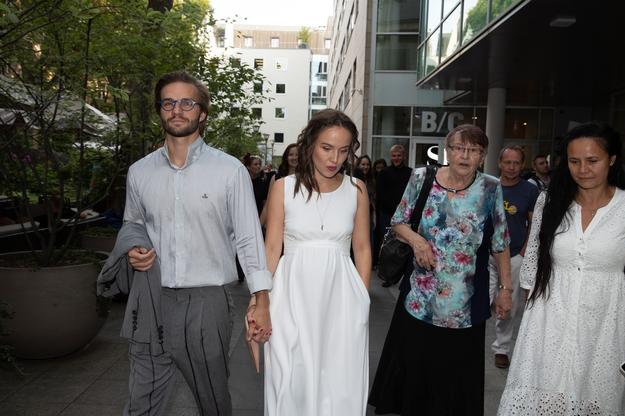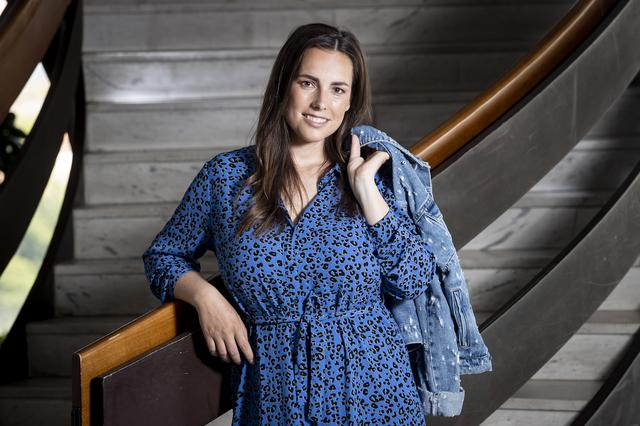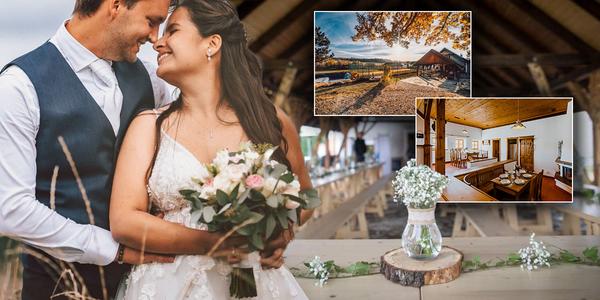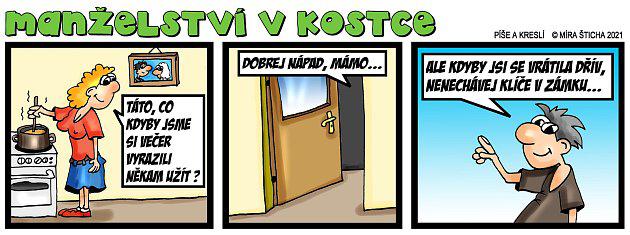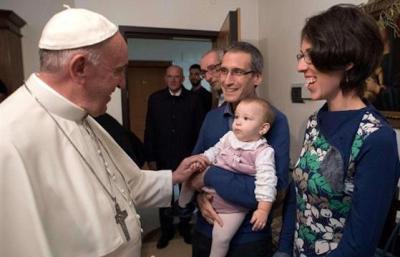Visitors from all over the world come to admire the Prague Baby Jesus<
Visitors from all over the world come to admire the Prague Baby Jesus
The altar dates from 1776, it was made by František Lauermann, the statues are by Petr Prachner. Next to the altar is a photograph of Pope Benedict XVI, who prayed to the Infant Jesus during his visit to Prague in 2009, and brought the crown to the statue. On the marble railing in front of the altar are sheets of paper with a prayer to the Baby Jesus in a number of world languages.
The statue was brought by the Duchess of Spain
The age of the statue is not precisely determined, it probably dates from the second half of the 16th century, when it was found in a dilapidated monastery by the monk Josef. The Duchess Marie Manriquez de Lara brought her from there, who in 1556 married one of the richest nobles, Wrocław of Pernštejn.
At first, the statuette lived on the Pernštejn East Bohemian estates, when Wrocław was appointed the highest Czech chancellor, the nobles arrived in Prague. She then donated the statue to her daughter Polyxena of Lobkovice for the wedding.
After her husband's death in 1628, Mrs. Polyxena dedicated it to the Barefoot Carmelite Monastery at the Church of Our Lady Victorious. After the Cathedral of St. Vitus, Wenceslas and Adalbert in the Castle, the church is the most visited church monument in Prague. The third will probably be the statue of John of Nepomuk on Charles Bridge and the place of his throwing into the water. The cult of Nepomuk has also spread around the world, but the Baby Jesus is better known.
Baby as a creator of miracles
The statuette has been in the church permanently since 1641. There are dozens of tablets on the walls around the altar as an expression of gratitude for healing.
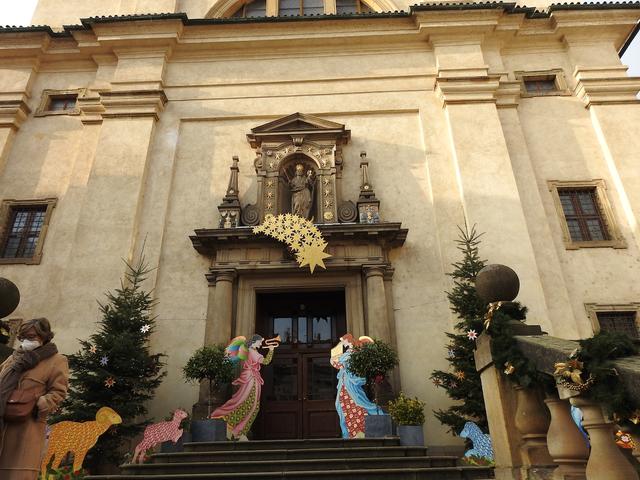
It also has a protective function, it protects Prague from diseases and war events, it was supposed to help against the Swedes who plundered Prague in 1639. The statuette toured the churches in Prague in 1651 and was crowned by the Archbishop of Prague in the same year.
The dress is a gift from the faithful, including Maria Theresa
You can see the crown on the head, the statuette also has a number of outfits available, her dress is a sign of great respect. Dresses are usually a gift from believers. There is a small museum in the church, which you climb up the stairs at the end of the temple, to the right of the main altar. There are also clothes from Latin America, the Pacific region, and there is also a dress embroidered by the Empress and the Czech Queen Maria Theresa.
The crown and the royal apple point to Jesus' deity and royal dignity. The color of the dresses is governed by the liturgical period, they are mostly green and white, at the time of Advent the statue is decorated in purple, at Christmas it is without dresses, in the spirit of the saying "I was born naked".
During the missions, the Carmelites took Baby Jesus into the world
The popularity of the Baby Jesus was credited to the Carmelites, a copy of the statue was distributed to all their monasteries, the brothers engaged in missionary activities and traveled on their journeys with pictures of the holy child. The monks came from monasteries in Spain and Portugal, from where awareness of miracles spread to South America.
The locals have adapted it, instead of a dignified Baroque child you will find a colorfully dressed or painted robe. From churches around the world, news of miracles comes to the Prague tabernacle.
The baby also served as an official gift, President Havel carried a copy of the statue while visiting the Philippines.
Return after two hundred years
In the 18th century, the interior of the church was subject to a unified concept, decorated by the best artists of the time. The left side of the church is thematically dedicated to the Carmelite saints; In front of the altar is a wonderful statue of St. Teresa of Lisieux by Jiří Kobr from 2019. The right side is dedicated to the earthly family of Christ.
The central axis consists of a baptistery, an ambush (an elevated place, hence the word of God), an altar and a cross.
The main altar is in the form of a triumphal arch from 1723, among the trophies is a copy of the White Mountain painting, in the view is the Virgin Mary begging for victory from 1641.
In 1784, the monastery was abolished by decree of Joseph II. The Carmelites had to leave him. In 1993, after more than two hundred years, the barefoot Carmelites returned at the request of Archbishop Cardinal Miroslav Vlk. In the church, the Carmelites of the Child Jesus help and take care of the statue.
Where to escape from the autumn weather in Prague? To the museum and virtual reality TravelBring the animals fruit or carrots
A large nativity scene is built in front of the church in Karmelitská Street every year, the figures are life-size. At the foot of the stairs leading to the church is a small pen with a donkey, pony, sheep and goat, which you can feed with granules for a fee. But if you have an apple or a carrot, the animals will prefer you in a rather small space.
| Free tourist navigation |
| When on a trip, with the tourist navigation Mapy.cz. The application is free and works without a signal. |


 Tags:
Tags: Prev
Prev
